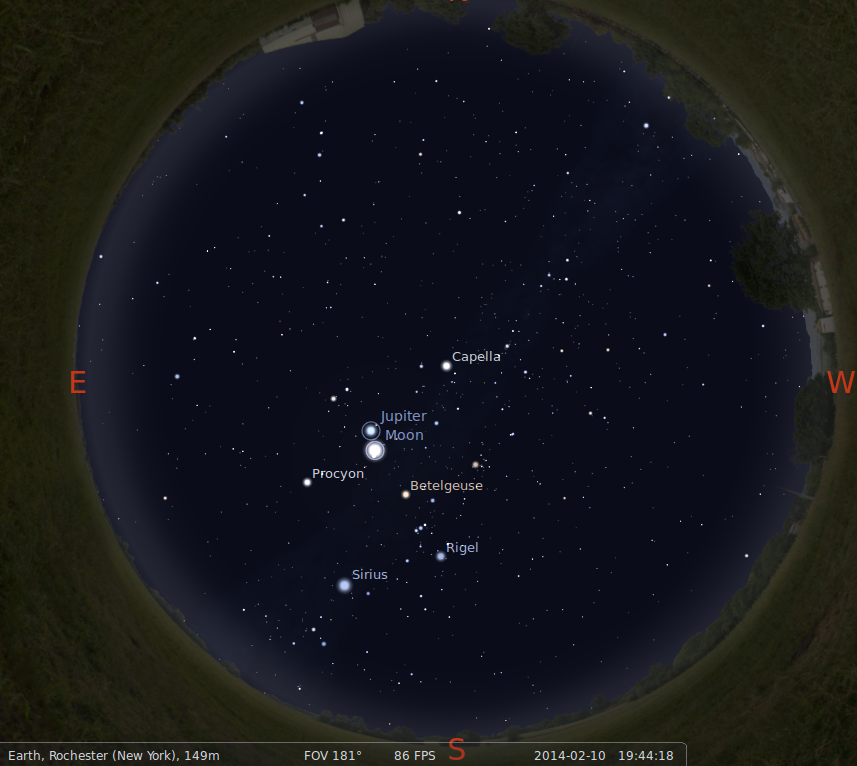 Copyright © Michael Richmond.
This work is licensed under a Creative Commons License.
Copyright © Michael Richmond.
This work is licensed under a Creative Commons License.
Lab exercise: use celestial coordinates and times
Before we begin, we need to discuss
one more system of time that astronomers
use:
Local Sidereal Time, or LST for short.
Okay, now you're ready to go.
You've been hearing about celestial coordinates
and time systems.
Let's see if you can use them.
On Feb 10, 2014, at about 19:44 local time in
Rochester, NY, the sky will look like this:

- Use this picture to estimate roughly the Declination of Capella.
Explain your reasoning.
Don't just look it up in a catalog ...
- Now, do look up the coordinates of Capella
in a catalog. Write down the Right Ascension
and Declination. How close were you
to the proper declination?
- What is the current Local Sideral Time?
Explain how you can determine it from this picture.
- How long until Sirius reaches the meridian?
- The star at the end of the handle of the Big Dipper
is named Alkaid.
Using this picture,
estimate the altitude and azimuth of Alkaid
at this moment.
- What is the Universal Time (and date) at this moment?
- What is the Julian Date at this moment?
- Your friend Alphonse lives in Paris.
At this very moment, can he see the Moon in his sky?
If yes, where should he look?
If no, why not?
Bonus!
If you wish, you may do the following for extra credit.
- In lecture a few days ago, I mentioned that the
bright star Regulus would be occulted by the
asteroid 163 Erigone some time in March.
- On what date and time will the asteroid's shadow
pass through upstate New York?
- At that time, where should we (observing from RIT)
look in the sky to find Regulus?
Express your answer in altitude and azimuth.
Write down all your answers on a piece of paper,
and include your name neatly at the top.
Turn in the paper before you leave.
Take a look at the answers
 Copyright © Michael Richmond.
This work is licensed under a Creative Commons License.
Copyright © Michael Richmond.
This work is licensed under a Creative Commons License.

 Copyright © Michael Richmond.
This work is licensed under a Creative Commons License.
Copyright © Michael Richmond.
This work is licensed under a Creative Commons License.

 Copyright © Michael Richmond.
This work is licensed under a Creative Commons License.
Copyright © Michael Richmond.
This work is licensed under a Creative Commons License.